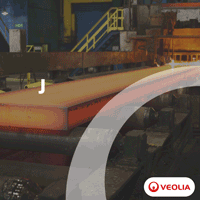MesoCoat Receives Two New Grants to Develop CermaClad™ Arc Lamp Applications
10/10/2014 - Abakan Inc., an emerging leader in the advanced coatings and metal formulations markets, announced that its subsidiary, MesoCoat Inc., along with Oak Ridge National Laboratory (ORNL), have been awarded US$1 million by the Department of Energy (DOE) to develop a process to join dissimilar metal alloys.
The award will be shared equally. Additionally, MesoCoat has won a US$150,000 SBIR (Small Business Innovation Research), award from the National Institute of Health (NIH) to develop antimicrobial coatings using its high-speed large-area metal cladding technology CermaClad™.
The primary objectives of the DOE project are to develop functional gradient transition joints between carbon steel and austenitic stainless steel for nuclear reactors, and to develop advanced joining techniques for dissimilar materials used in nuclear fission reactors.
The primary objective of the NIH project is to develop copper-based antimicrobial coatings primarily for contact surfaces in hospitals that could also be applied to many other public areas such as airports, bus and railway stations, schools, restaurants and work places. Antimicrobial coatings could have a significant impact on public health by preventing the outbreak of infections and diseases. Successful initial results could lead to significant follow-up funding from the NIH.
“These new opportunities are synergistic with several of our ongoing CermaClad™ Arc Lamp system projects and demonstrate how broad the recognition is that we continue to receive from national and international organizations who believe in the performance and effectiveness of our products and technologies,” stated Abakan CEO, Robert Miller. “MesoCoat’s CermaClad™ cladding technology has practically no limitations on the materials that it can melt, fuse, and coat using its high-intensity arc lamp. We have demonstrated the coating/cladding of nickel based alloys, copper based alloys, carbide, stainless steel, and even titanium on a variety of metal substrates. CermaClad™ enables us to add functionalities such as resistance to corrosion, wear, heat, and microorganisms to almost any metal at a fraction of the cost when compared to metals made from extremely expensive exotic alloys with these functionalities. CermaClad™ technology is currently being used to develop corrosion- and wear-resistant clad pipes for offshore and onshore oil and gas, oil sands and mining applications. A combination of lower cost, better performance, and higher production rate, indicates to us that CermaClad™ clad pipe has the potential to be the default choice for clad pipe in these industries,” concluded Miller.
The primary objectives of the DOE project are to develop functional gradient transition joints between carbon steel and austenitic stainless steel for nuclear reactors, and to develop advanced joining techniques for dissimilar materials used in nuclear fission reactors.
The primary objective of the NIH project is to develop copper-based antimicrobial coatings primarily for contact surfaces in hospitals that could also be applied to many other public areas such as airports, bus and railway stations, schools, restaurants and work places. Antimicrobial coatings could have a significant impact on public health by preventing the outbreak of infections and diseases. Successful initial results could lead to significant follow-up funding from the NIH.
“These new opportunities are synergistic with several of our ongoing CermaClad™ Arc Lamp system projects and demonstrate how broad the recognition is that we continue to receive from national and international organizations who believe in the performance and effectiveness of our products and technologies,” stated Abakan CEO, Robert Miller. “MesoCoat’s CermaClad™ cladding technology has practically no limitations on the materials that it can melt, fuse, and coat using its high-intensity arc lamp. We have demonstrated the coating/cladding of nickel based alloys, copper based alloys, carbide, stainless steel, and even titanium on a variety of metal substrates. CermaClad™ enables us to add functionalities such as resistance to corrosion, wear, heat, and microorganisms to almost any metal at a fraction of the cost when compared to metals made from extremely expensive exotic alloys with these functionalities. CermaClad™ technology is currently being used to develop corrosion- and wear-resistant clad pipes for offshore and onshore oil and gas, oil sands and mining applications. A combination of lower cost, better performance, and higher production rate, indicates to us that CermaClad™ clad pipe has the potential to be the default choice for clad pipe in these industries,” concluded Miller.



-(220-x-200-px)-(130-x-130-px)-(220-x-200-px).jpg?lang=en-US&ext=.jpg)
.gif?width=200&height=200&mediaprotectionhash=ddb07947ad3b4ab959a83714461eccd5c6895f370695eb035a9ff7aa736f8ad9&ext=.gif)





